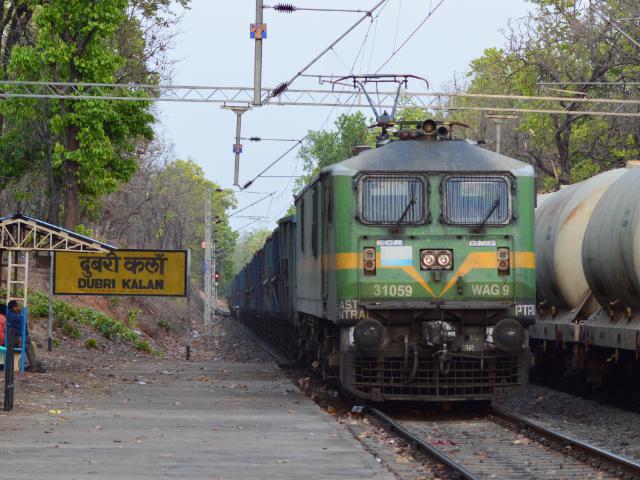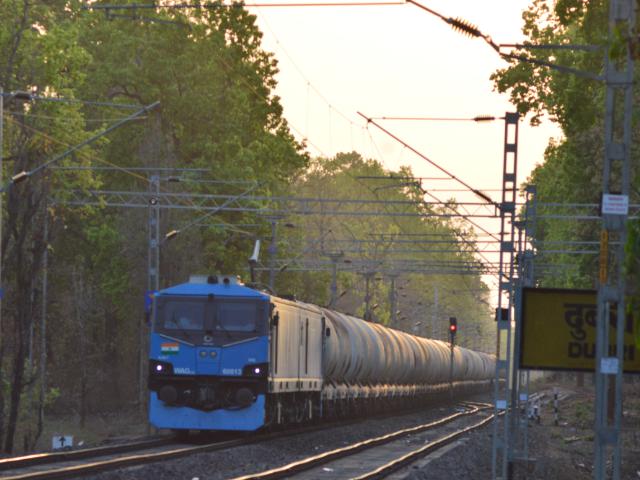Three tiger cubs orphaned by a speeding train in Sanjay Dubri National park are alive and kicking- thanks to huge efforts made by the park management. But the trains- not two, three or four but as many as 25 - hurtling across the tiger reserve- continue to pose threat to the life of the big cats and other wildlife in this beautiful ecological hotspot situated on the north eastern end of Sidhi district in the central Indian state of Madhya Pradesh .Saving Sanjay Dubri means saving the beautiful Sal forest and other benefits linsked with the environment. Meanwhile, planning for the expansion of the existing tracks to double railway lines also continues.
Cubs Monitored Round the Clock
The beautiful tigress was hit by the speeding train in the third week of March leading to her painful death caused by multiple injuries. It was not only a loss of a breeding tigress but also that of orphaning of the four cubs. In the absence of the mother’s protection, one of them was killed by a tiger in only a few days. The remaining three went missing. Soon the park management launched search operations. Thick forest pockets where the tigress had died were explored. And within a few days the cubs were located. “They were hungry and thirsty and terrified after the death of their mother ”, said the field staff of the forest involved in the rescue operation of the cubs .
Ever since, the cubs are cornered to one part of the forest and it has been closed for the tourists. They are being monitored 24X7. The park staff also ensures that they get food and there is no scarcity of water around them. Less than one year of age, they also kill the small animals left around them by the workers involved in their safety and protection. There are as many as 22 big cats in the park and 19 cubs. All of them along with other carnivores and herbivores continue to be exposed to the risk of being hit by trains carrying coal and passengers. Park sources said that there were as many as 50 known deaths of wild animals including the tigress in the past 12 years by these trains . They include sloth bear, hyena, spotted deer and wild boars among others.
Jungle or Junction
Trains violate the tranquility of the park almost every hour. As they enter the jungle and approach Dubri Kalan railway station- named after a village of the same name yet to be relocated from the core area of the forest where the station is located- they whistle loudly and fly- past with a great speed. One of the trains- Howrah-Jabalpur Shaktipunj Express -travels at a speed of 100 km an hour. The state forest department and the park managers have already written to the Railways to ensure that the locomotive pilots lower down the speed while crossing the jungle. Majority of the trains crossing the park are laden with coal. When loaded they move with a speed of 70 kms an hour and when they return empty, the speed is even higher.
Two Mainline Electric Multiple Unit (MEMU) trains also halt at the station leading to another threat. The trains bring passengers to the core area of the forest which are unknown to forest rangers. In every park, entry is allowed only through specified park gates and all the people traveling in the vehicles are known. This has increased the poaching threat in the jungle as Katni junction connected directly with Dubri kala and situated about 100 kms away from Dubri station- is a poachers' paradise. It is identified by TRAFFIC, the Wildlife Trade Monitoring Network, as one of the hotspots for the smuggling of wild animals including the tiger and their body parts. There is also a staff of about 35 people including railways’ gangmen posted at the station. Many of them come from Beohari- the railway station next to Dubri Kalan- every day and return home in the evening. “There is a lot of unmonitored movement of people not good for any national park”, the forest department said.
Double Track Threat Looms Large
When such is the danger posed by a single line of the railways, imagine the double track threats. They would simply double killing more animals and bring more unknown people to the park. Dubri Kalan village with over 1200 people and a large number of livestock and dogs will soon be shifted out of the jungle making the station redundant .
Also Read: Rape of a Jungle :Palamu National Park
But passengers of Dubri kalan are not the railways’ concern. The railways are making money from the transportation of coal. Millions are made by the Indian Railways by the coal freight from Singrauli district Madhya Pradesh to other parts of the state. Though India has promised to bring down its coal consumption, tons of coal continues to be excavated from Singrauli coalfields.





Comments
Post a Comment